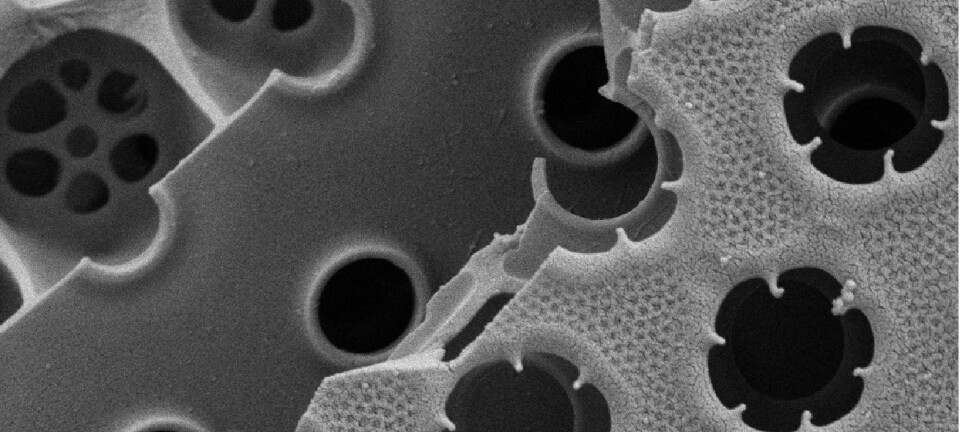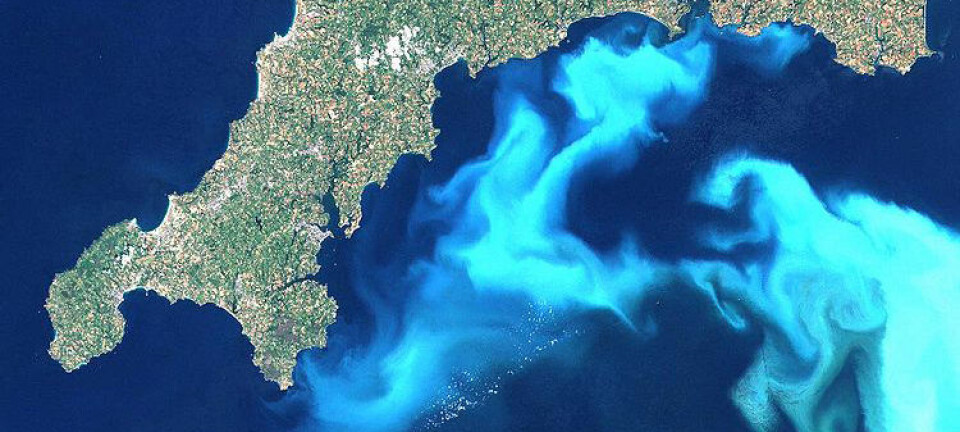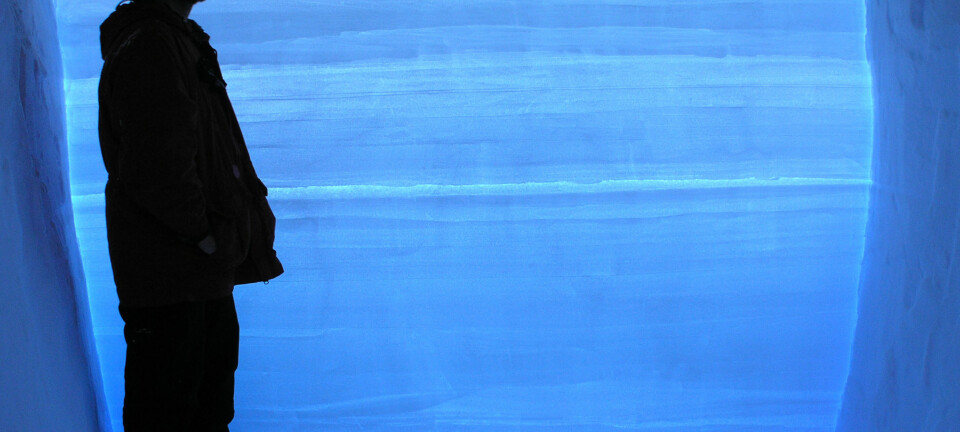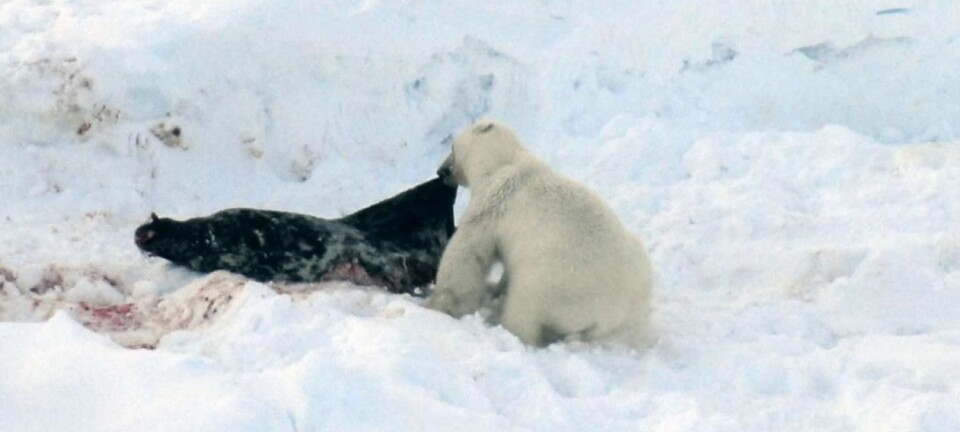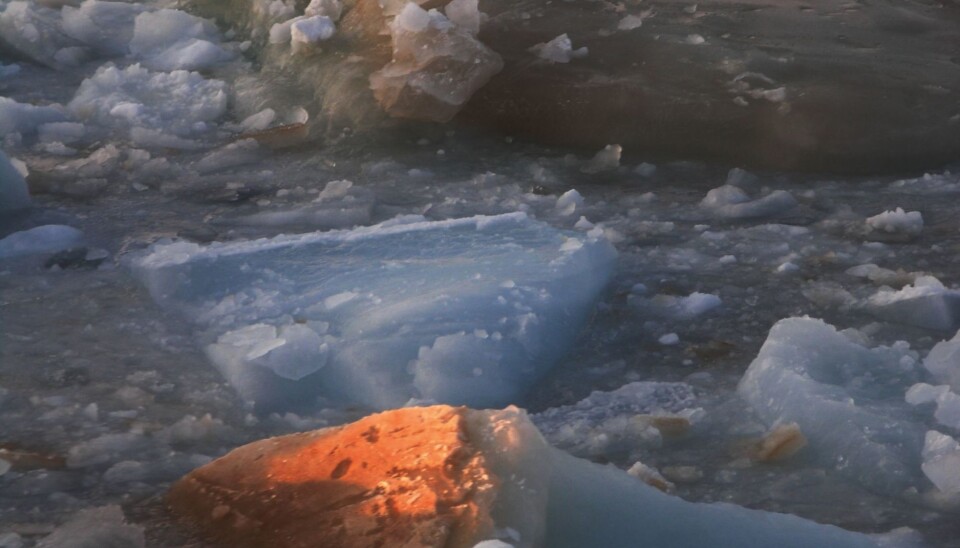
How algae slime impacts the climate
Algae in the sea ice around the Arctic and the Antarctic convert CO2 into micro-gels. This makes it possible to see whether this cold slime actually counteracts climate change.
Scientists can now calculate the amount of CO2 that algae in the ice around the poles convert into so-called exopolymers and thus pull out of the atmosphere.
The findings from a new study enable researchers to determine what effect these gel-like substances have on the global carbon balance and the ongoing climate change.
”By knowing the thickness and the amount of bacteria in the ice, we can now calculate how much slime is produced in the ice and thus also how much carbon is absorbed by the sea ice and pulled out of the atmosphere each year,” says Professor David Thomas, of Aarhus University’s Arctic Research Centre, who co-authored the study.
Life as an ice alga is not easy
Being an alga in the sea around the Arctic or the Antarctic is by no means a picnic.
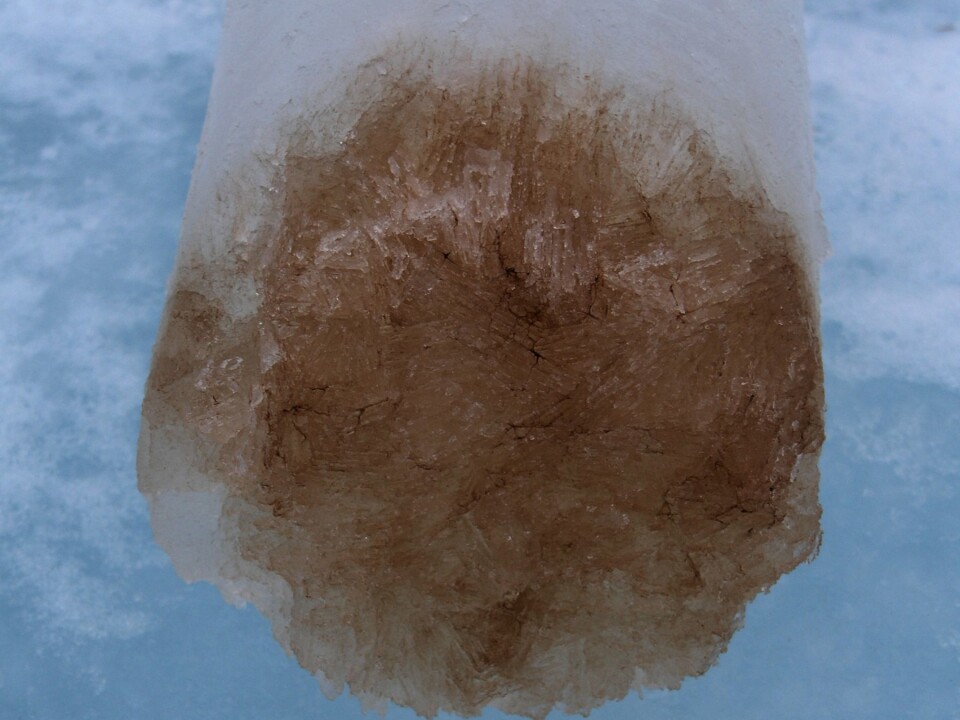
Every year when winter arrives, their entire world freezes and they are trapped in a prison of ice.
Life conditions in the ice are not for the faint-hearted. Temperatures can reach minus 20 degrees C., and the brines in the ice channels are so salty that the environment would suck the algae dry of water, had they not protected themselves against this high salt concentration.
Luckily, millions of years of evolution have equipped the algae to survive their battle against the ice.
This means that the algae can adjust their various biochemical molecules to prevent them from freezing.
We can estimate the concentration of gels in ice, by knowing rather routine measurements such as the thickness of the ice floes, temperature and salinity of the ice and the quantity of ice biology measured as the chlorophyll content of the ice.
Their cells replace saturated fatty acids with unsaturated fatty acids, which can stay afloat even at very low temperatures. The enzymes in the algae are also replaced by new ones that work better at low temperatures.
The cleverest tool in their survival kit, however, is a slimy substance that the algae cover themselves in. This slime, known as exopolymers, creates a barrier against the environmental stress, so that the algae do not make contact with the deadly brines that accumulate in the ice channels.
“These tools make it possible for the algae and the bacteria to survive in the ice over the winter,” says Thomas.
Slime traps carbon in the atmosphere
The gels promote the clumping together of cells when they are released from the ice when it melts. These sticky masses fall more rapidly to the seafloor, taking carbon (and food) out of the surface water.
There is also evidence that micro-gels at the ocean surface may get caught up into the air and eventually act as cloud-condensing nuclei, thereby affecting the weather. The gels therefore have profound implications for not only the long-term burial of carbon in the ocean floor, but also the global carbon budget and the weather.
An international project
Since 2006, Professor Thomas and two researchers from the University of Essex, UK, have led several projects to study the production of micro-gels and their widespread importance to the frozen realms of the world’s oceans.
They teamed up with colleagues from Australia and Canada to collect and analyse ice cores from both the Arctic and the Antarctic.
Seven years on, and many frozen trips later, they are now able to determine the amounts of gel production from the ice microbes based on data of the physical nature of the ice and the amount of microbiology.
“It means that we can estimate the concentration of gels in ice, by knowing rather routine measurements such as the thickness of the ice floes, temperature and salinity of the ice and the quantity of ice biology measured as the chlorophyll content of the ice,” says Thomas.
“This is a huge step forward to enable us to estimate the significance of these materials for the millions of square kilometres of Antarctic and Arctic pack ice.”
------------------------
Read the Danish version of this article at videnskab.dk
